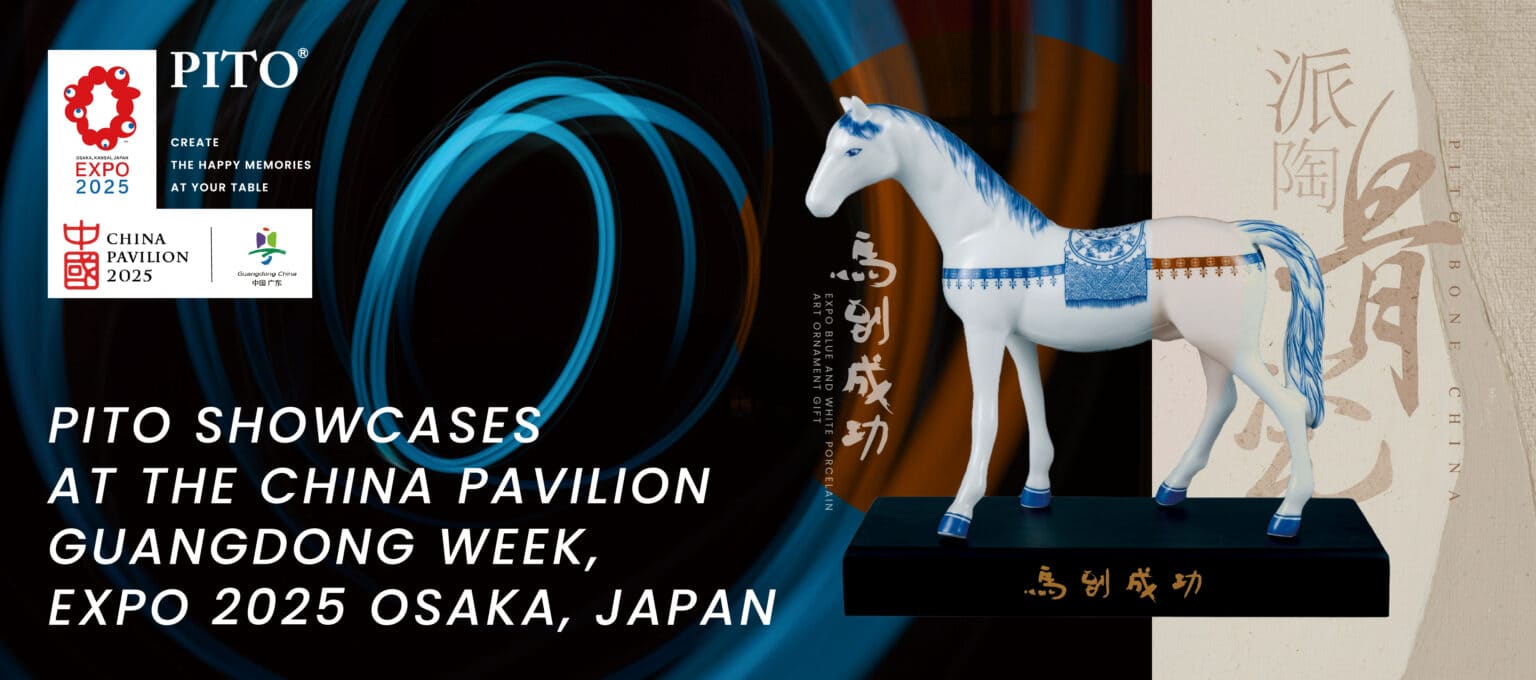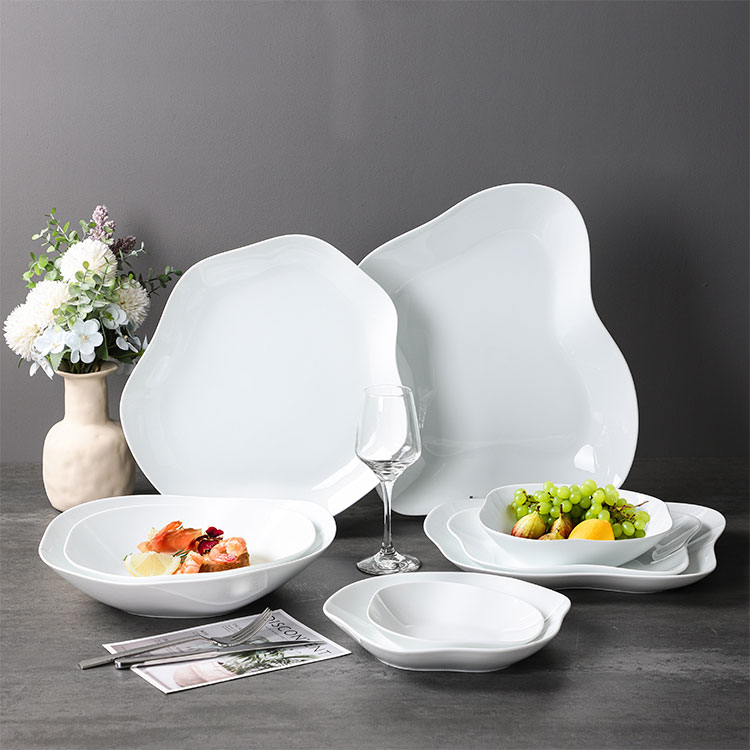
No mundo acelerado do louça de cerâmica indústria, é essencial ter uma compreensão abrangente das diferenças entre placas de porcelana e cerâmica. Esses dois materiais são comumente usados e frequentemente confundidos, o que pode levar a decisões de compra enganosas. Para fazer escolhas informadas e garantir a satisfação do cliente, é crucial compreender as diferenças.
Ao aprofundar-se nas diversas características das placas de porcelana e cerâmica, podemos apreciar melhor suas qualidades únicas e determinar qual opção melhor atende às nossas necessidades. Então, vamos nos aprofundar nas características das placas de porcelana e cerâmica para desvendar essas distinções e explorar as implicações eles valem para nossas escolhas de talheres.
Porcelana versus. Placas Cerâmicas: Entenda as diferenças
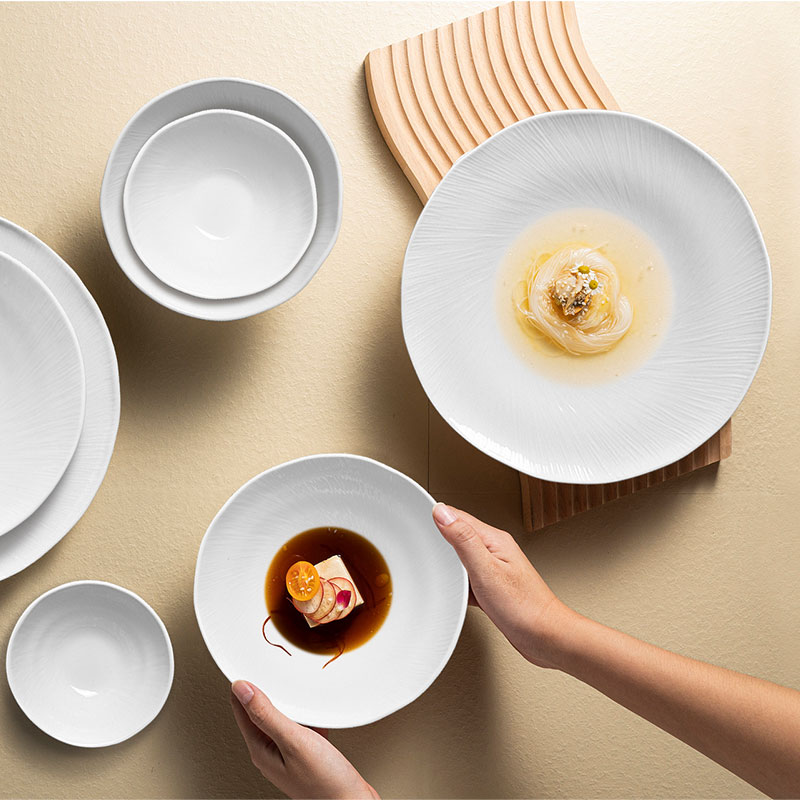
Pratos de Porcelana: Porcelana versus. Bone China
Pratos de porcelana são elaborados a partir uma mistura de argila branca e vários minerais. Esta combinação é então disparada em altas temperaturas, resultando em um material denso e não poroso. Os pratos de porcelana são muito valorizados pela sua beleza delicada, qualidade superior, e longevidade. Eles são frequentemente considerados uma escolha luxuosa e sofisticada para utensílios de mesa.
Um subtipo de porcelana é porcelana de ossos. A porcelana óssea incorpora cinza de osso na mistura de argila, dando-lhe uma translucidez delicada e maior resistência. A adição de cinza de osso também aumenta a sua capacidade de resistir a quebras e lascas.. Louça de porcelana de osso, em particular, é conhecido por sua translucidez excepcional e detalhes requintados.
Placas Cerâmicas: Faiança vs.. Grés versus. Bela China
Faiança, Grés, e placas cerâmicas finas da China abrangem uma categoria mais ampla com diferentes subtipos, incluindo faiança, grés, e porcelana fina.
- Pratos de barro: Os pratos de barro são feitos de argila com temperatura de queima mais baixa. Isso resulta em uma aparência rústica e muitas vezes decorativa. A cerâmica é geralmente mais porosa e menos durável do que outros tipos de cerâmica. É ideal para uso ocasional ou decorativo, em vez de uso diário pesado.
- Pratos de Grés: Placas de grés são queimadas temperaturas mais altas, o que os torna mais densos e duráveis do que a faiança. São menos porosos e mais adequados para o uso diário. Placas de grés oferecem equilíbrio entre durabilidade e estética, muitas vezes apresentando uma grande variedade de designs e esmaltes elegantes.
- Pratos finos de porcelana: Porcelana fina, também conhecida como porcelana chinesa ou simplesmente porcelana, é um tipo de placa cerâmica delicada e refinada. É disparado em altas temperaturas, semelhante a porcelana, mas muitas vezes com materiais adicionais para alcançar a translucidez e suavidade desejadas. Pratos de porcelana fina são muito procurados por sua aparência sofisticada e normalmente reservados para ocasiões especiais. Devido à sua natureza delicada, eles exigem cuidados extras e não são tão adequados para o uso diário.
Compreender as distinções de composição e subtipos entre placas de porcelana e cerâmica nos permite apreciar as características únicas que cada tipo oferece. Seja buscando resistência e elegância em placas de porcelana ou versatilidade e estética em placas cerâmicas, há uma escolha perfeita para cada configuração de mesa e ocasião.
Porcelana versus. Placas Cerâmicas: Durabilidade
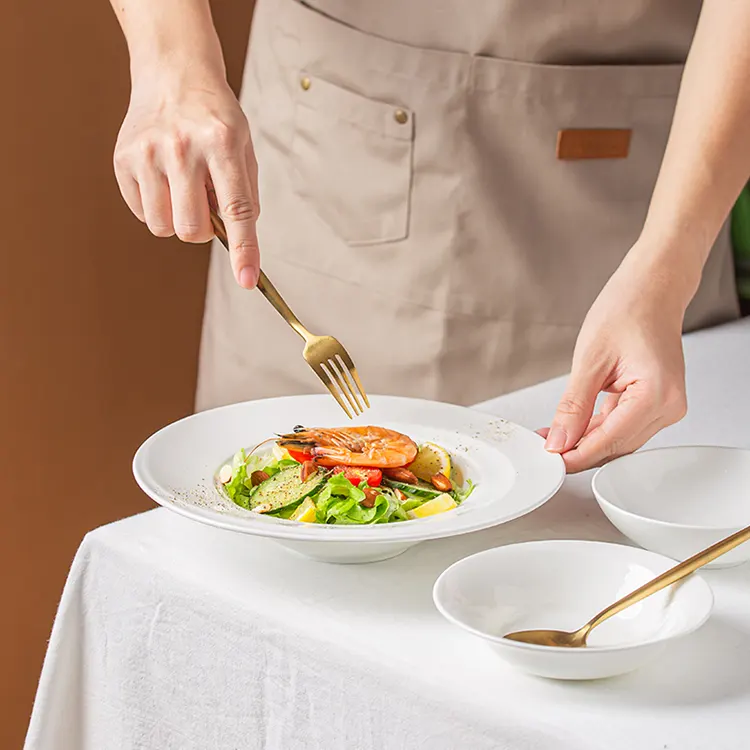
Pratos de Porcelana
- Disparado em altas temperaturas: Placas de porcelana passam por um processo de queima em alta temperatura, resultando em sua durabilidade excepcional.
- Natureza não porosa e resistência a lascas: A densa composição das placas de porcelana as torna não porosas, evitando que líquidos sejam absorvidos. Adicionalmente, apresentam maior resistência ao lascamento em comparação com outros tipos de placas cerâmicas.
- Duradouro e adequado para uso diário: Devido à sua alta durabilidade, as placas de porcelana são ideais para o uso diário, pois podem suportar manuseio e lavagem frequentes sem desgastar ou desbotar facilmente.
Placas Cerâmicas
Níveis variados de durabilidade dependendo do tipo: As placas cerâmicas têm níveis variados de durabilidade com base no seu tipo específico.
- Faiança: Pratos de barro, disparado em temperaturas mais baixas, tendem a ser menos duráveis. Eles são mais adequados para fins decorativos ou uso ocasional.
- Grés: Pratos de grés, disparado em temperaturas mais altas, oferecem maior durabilidade em comparação com a faiança. Eles são projetados para uso diário regular e podem suportar os rigores das refeições diárias.
- Bela China: Pratos de porcelana fina, embora delicado por natureza, possuem uma aparência refinada e elegante. Eles exigem um manuseio cuidadoso devido à sua qualidade requintada e leve translucidez.
Compreender a durabilidade das placas de porcelana e cerâmica nos permite selecionar a opção mais adequada de acordo com nossas necessidades. Placas de porcelana primam pela durabilidade de longa duração, tornando-os adequados para o uso diário, enquanto as placas cerâmicas oferecem uma variedade de níveis de durabilidade dependendo do tipo específico escolhido.
Cerâmica versus. Pratos de Porcelana: Peso
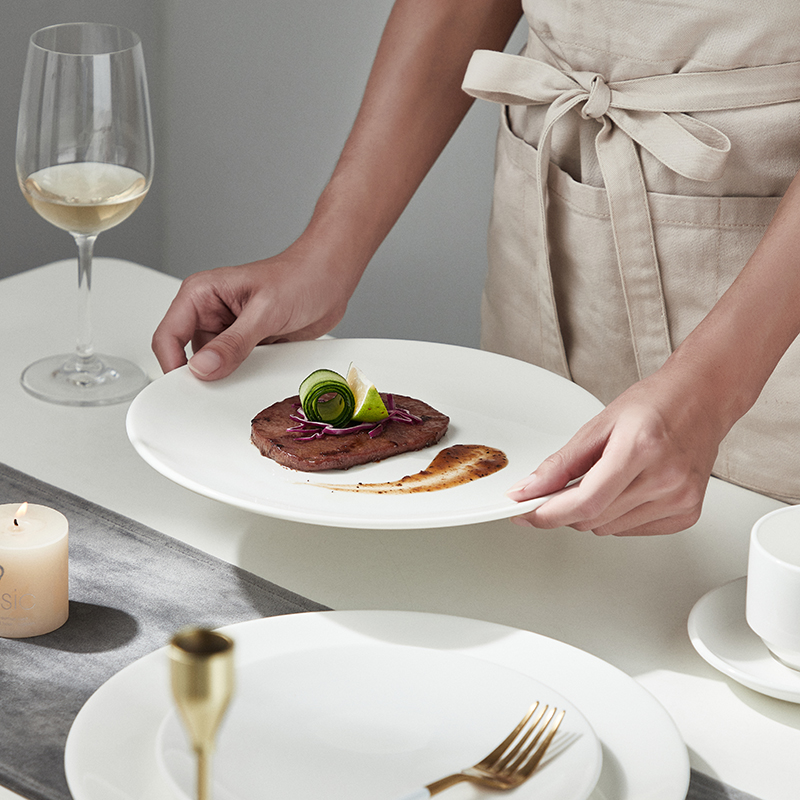
Ao selecionar louça, o peso dos pratos pode desempenhar um papel significativo na experiência gastronômica geral. Vamos explorar as diferenças de peso entre placas de cerâmica e porcelana.
Pratos de Porcelana
- Leve e delicado: Os pratos de porcelana são conhecidos pela sua leveza. Proporcionam um toque elegante e delicado à disposição da mesa.
- Fácil de manusear e empilhar: A leveza dos pratos de porcelana torna-os fáceis de manusear e empilhar, permitindo armazenamento e serviço convenientes.
Placas Cerâmicas
Um pouco mais pesado devido às diferentes composições de argila: Placas cerâmicas, em comparação com porcelana, tendem a ser um pouco mais pesados devido à variação nas composições de argila utilizadas.
- Oferece uma sensação robusta e substancial: O peso ligeiramente aumentado dos pratos de cerâmica dá-lhes uma sensação sólida e substancial durante o jantar. Isso pode fornecer uma sensação de durabilidade e estabilidade durante o uso.
A consideração do peso das placas é subjetiva e depende da preferência pessoal. Algumas pessoas podem preferir a leveza e delicadeza dos pratos de porcelana, enquanto outros podem apreciar a robustez e o peso das placas cerâmicas. Em última análise, a escolha entre os dois depende da experiência gastronômica desejada e das preferências individuais.
Quais placas são melhores: Porcelana ou Cerâmica
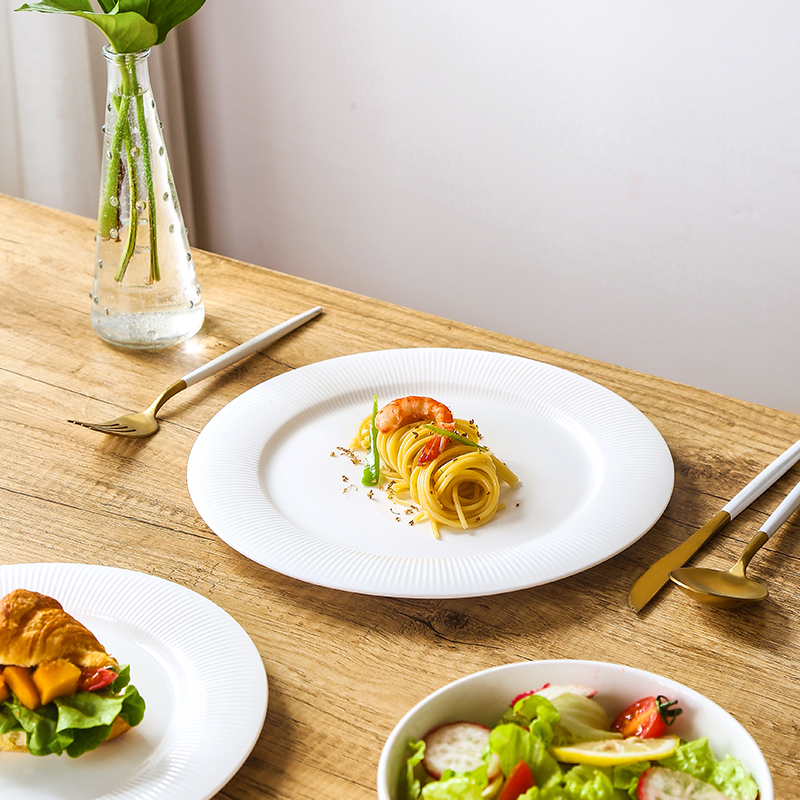
Determinar se as placas de porcelana ou cerâmica são melhores depende de vários fatores que são exclusivos das preferências e requisitos individuais.. Considere os seguintes aspectos ao tomar uma decisão:
Fatores a considerar
- Uso pretendido e frequência de uso: Considere se os pratos serão usados para refeições diárias ou ocasiões especiais. Pratos de porcelana, com sua alta durabilidade, são adequados para uso regular, enquanto as placas de cerâmica oferecem versatilidade para diferentes ocasiões.
- Preferências pessoais e apelo estético: Decida o estilo e a aparência desejados que se alinham ao seu gosto pessoal. Pratos de porcelana geralmente proporcionam uma aparência elegante e refinada, enquanto as placas de cerâmica oferecem uma gama mais ampla de estilos e opções decorativas.
- Considerações orçamentárias: Considere seu orçamento e acessibilidade. Placas cerâmicas, especialmente faiança, tendem a ser mais econômicos em comparação ao porcelanato.
A melhor escolha depende de suas necessidades
Pratos de porcelana podem ser preferíveis por sua durabilidade e estética elegante. Eles são adequados para uso diário e podem suportar manuseio frequente. Placas cerâmicas, com sua variedade de tipos e estilos, oferecer flexibilidade e atender a diferentes preferências. Eles podem ser escolhidos com base nas ocasiões, preferências pessoais, e restrições orçamentárias.
Em última análise, a seleção entre placas de porcelana e cerâmica depende de suas necessidades e preferências específicas. Considere os fatores mencionados acima para tomar uma decisão informada e escolher as placas que melhor se alinham às suas necessidades e estilo.
Conclusão
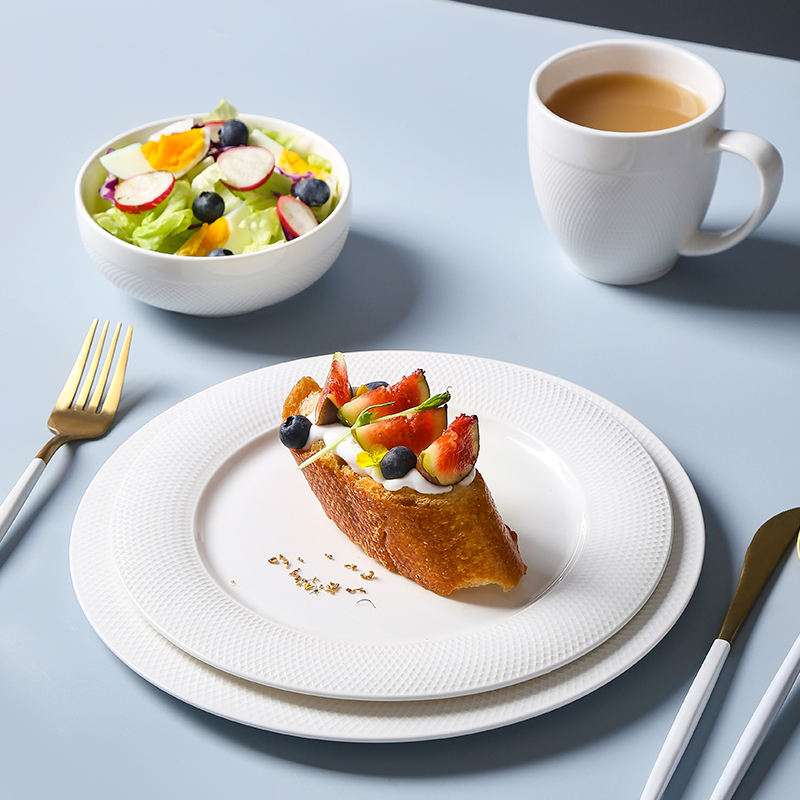
Compreender as distinções entre pratos de porcelana e cerâmica é vital para fazer uma escolha informada quando se trata de louças. Conhecendo o composição variável, características, durabilidade, e apelo estético de placas de porcelana e cerâmica permite que os indivíduos selecionem a opção mais adequada às suas necessidades e preferências específicas. Ao reconhecer essas diferenças, podemos garantir que nossa experiência gastronômica seja aprimorada, e nossas configurações de mesa refletem nosso estilo pessoal.
Esperamos que esta viagem pelo fascinante mundo da louça tenha fornecido informações úteis e lhe tenha permitido tomar decisões informadas.. Ao compreender as nuances das placas de porcelana e cerâmica, podemos elevar nossas experiências gastronômicas e encontrar alegria na arte de arrumar a mesa. Boas refeições e que os pratos escolhidos tragam beleza e funcionalidade às suas refeições nos próximos anos.

